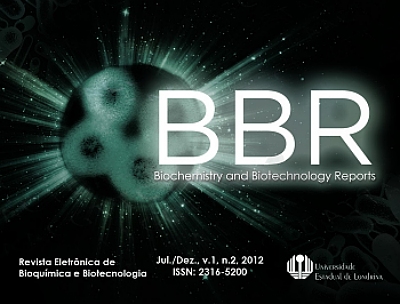Avaliação de Leveduras Isoladas na Região de Pinto Bandeira, Bento Gonçalves (RS) com relação à Produção de H2S e Velocidade de Fermentação
DOI:
https://doi.org/10.5433/2316-5200.2012v1n2p24Palabras clave:
Seleção de leveduras, H2S, fermentaçãoResumen
A produção de sulfeto de hidrogênio por leveduras é um problema frequente durante aelaboração de vinhos. O sulfeto de hidrogênio é um gás que produz o odor característico de ovos podres. Portanto, é importante selecionar linhagens de Saccharomyces cerevisiae que não liberem sulfeto de hidrogênio durante a fermentação, e assim não formar aromas indesejáveis. O objetivo deste trabalho foi avaliar as leveduras isoladas das cultivares Cabernet Franc, Tannat e Ancellotta da região de Pinto Bandeira, Bento Gonçalves (RS) em relação à formação de sulfeto de hidrogênio e capacidade de fermentação. Papel embebido em acetato de chumbo foi utilizado para detectar a produção de sulfeto de hidrogênio em 120 linhagens. A capacidade fermentativa foi medida por gravimetria. Todas as linhagens com alta taxa de fermentação não produziram sulfeto de hidrogênio, representando 13,3%. Apenas uma destas formou sulfeto de hidrogênio em pequena quantidade em dois dos três tubos. Alta produção de sulfeto de hidrogênio foi encontrada em 35,8% das linhagens isoladas. Estas também foram caracterizadas por baixa capacidade fermentativa. Somente 16 linhagens mostraram potencial para elaborar vinhos sem aromas desagradáveis provocados pelo H2S.


